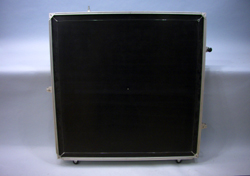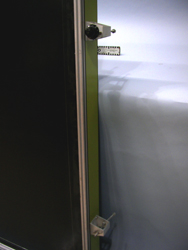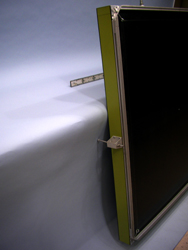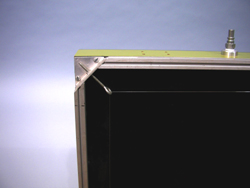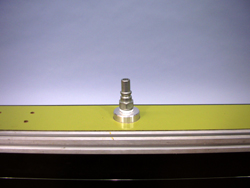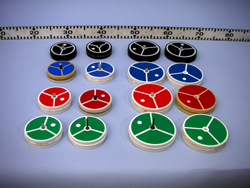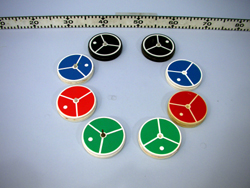Air Table Collisions - Unequal Mass, 1N40.21
Topic and Concept:
Location:
Floor Item: ME, South Wall
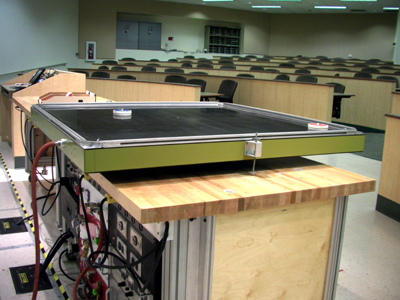
Abstract:
Collide two pucks of unequal mass on an air table, one moving and one stationary, while varying the angle of impact between them.
Equipment |
Location |
ID Number |
|
|
|
Air Table |
Floor Item: ME, South Wall |
|
Air Pucks |
ME, Bay B1, Shelf #2 |
|
ME, Bay B1, Shelf #2 |
|
Important Setup Notes:
This demonstration requires a supply of compressed air!
Setup and Procedure:
- Connect the compressed air supply to the nozzle on the air table.
Turn on the air when ready. See air & gas cart page for operating instructions.
- Place the target puck about one third of the total table length away from the end. This will remain stationary.
- When ready, use your hand to accelerate the other puck from the far end of the table toward the target puck.
- Repeat this collision using different incident angles.
Cautions, Warnings, or Safety Concerns:
- Make sure you are using compressed air and NOT methane gas!
Discussion:
In conservative systems, linear momentum is always conserved (the full vector quantity - magnitude & direction). The larger the angle of incidence, the larger the angle between the final momenta will be. With the colliding masses staying the same and consistently using the same mass as the incident mass, the only effective variable in this demonstration is the incident angle. To see the effect that having a relatively larger or smaller incident mass has, alternate the collisions between larger and smaller incident angles. Compare the results while using the same incident angle (easier said than done - requires some practice). To "remove" the mass effect in this collision, refer to Air Table Collisions - Equal Masses
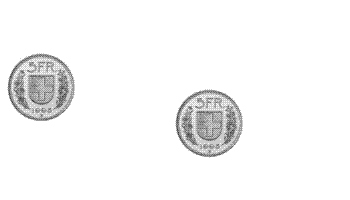
Videos:
References:
